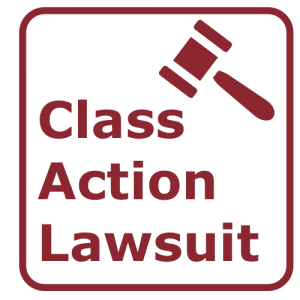Recognizing Class Activity Lawsuit: A Guide for Lawyers
Class activity claims have actually ended up being an integral component of the lawful landscape, allowing for the debt consolidation of multiple insurance claims right into a solitary action. For attorneys, comprehending the ins and outs of class action lawsuits is important in efficiently representing their customers. This detailed overview explores the basics of course action suits, from determining possible class participants to browsing the certification procedure. In addition, it explores essential approaches for managing class activity litigation and gives insights into negotiating and getting approval for settlements. By diving right into the complexities of class activity claims, this guide outfits attorneys with the expertise and tools needed to efficiently navigate this intricate location of law.
The Essentials of Course Activity Claims
Class activity claims are a legal system utilized to consolidate comparable claims from a team of individuals right into a single legal action, offering a affordable and effective technique to looking for justice and resolution. This kind of legal action permits a depictive complainant, acting on behalf of the entire course, to bring a claim versus an accused who has presumably created injury or breached the legal rights of numerous people.
The standard requirements for bringing a course activity lawsuit consist of numerosity, commonness, typicality, and adequacy of depiction. Numerosity refers to the reality that the course should be so big that joinder of all members would certainly be impractical.
Class activity claims can be useful for both defendants and plaintiffs. For complainants, it permits them to pool their sources and share the dangers and expenses connected with lawsuits. When they are up against large corporations or entities, it likewise offers a degree playing area. For offenders, it provides the possibility to effectively deal with several claims in a solitary lawsuit, staying clear of the requirement to safeguard against countless private suits.
Identifying and Assessing Potential Class Participants
After developing the fundamental requirements for a class activity lawsuit, the next step is to recognize and analyze prospective class members. If they satisfy the essential requirements., this process includes identifying that might be part of the class and evaluating their claims to determine.
To recognize possible course members, legal representatives normally perform extensive research study and collect relevant information. This may entail assessing records, carrying out meetings, and examining documents to recognize individuals or entities that might have been impacted by the supposed misbehavior. It is vital to develop a clear and thorough list of prospective course participants to make certain that all affected events are consisted of in the claim.
As soon as possible class participants have actually been determined, the following action is to analyze their insurance claims. If they fulfill the legal needs for course accreditation, this entails evaluating the qualities of each individual claim to figure out. Lawyers must very carefully assess the facts, evidence, and lawful concepts of each potential course participant's claim to ensure that they have a viable instance.
Evaluating potential course members likewise includes identifying whether they meet the class definition and have suffered similar damage as a result of the defendant's activities. This calls for contrasting the realities and circumstances of each potential class participant's scenario to the claims and lawful concepts placed forth in the claim.
Navigating the Course Qualification Refine
To successfully browse the course certification process, attorneys must vigilantly follow the step-by-step needs established forth by the court. Class certification is an important step in a course activity lawsuit, as it identifies whether a case can continue as a class action, standing for a team of individuals who have similar claims versus an offender. The process entails satisfying specific standards, such as numerosity, commonness, typicality, and adequacy of depiction.
First of all, legal representatives should establish numerosity by showing Check This Out that the course is so large that private joinder is impractical. This can be achieved with proof or specialist statement. They should develop commonality by showing that there are usual questions of legislation or reality that predominate over private problems. This needs a detailed evaluation of the defenses and cases involved.
Following, legal representatives should reveal typicality, which indicates that the representative complainant's claims are common of the cases of the course members. This makes sure that the interests of the depictive complainant straighten with the interests of the course. Last but not least, lawyers must show adequacy of depiction, meaning that the depictive complainant and their advice will rather and appropriately stand for the passions of the class.
To browse this process successfully, lawyers should thoroughly prepare by performing extensive study, gathering proof, and developing a compelling argument that pleases each of these requirements. They must likewise be prepared to respond to any type of objections or obstacles increased by the accused. By carefully sticking to the step-by-step demands stated by the court, lawyers can enhance their chances of obtaining class qualification and progressing the passions of the course members.

Secret Techniques for Taking Care Of Class Action Litigation
Upon effectively browsing the class qualification procedure, legal representatives must then apply key methods for properly managing course action litigation. These approaches are crucial to ensure that the case proceeds smoothly and successfully, inevitably maximizing the opportunities of a beneficial result for the course members.
One trick strategy is to establish a cohesive and solid lawful group (Class action lawsuit). This includes putting together a team of attorneys with know-how in course action lawsuits, along with other appropriate areas such as the specific industry or topic entailed in the case. A well-rounded group can bring various perspectives and skills to the table, boosting the general effectiveness of the litigation
One more vital approach is to create a comprehensive and well-thought-out lawsuits plan. This strategy ought to describe the overall objectives of the instance, along with the details lawful concepts and arguments that will certainly be gone after. It needs to also include a timeline and spending plan to ensure that the case remains on track click this and within the assigned sources.
Additionally, attorneys should actively engage with the course participants throughout the lawsuits procedure (Class action lawsuit). This includes providing routine updates on the development of the case, looking for input and feedback from the class members, and attending to any questions or issues they may have. By promoting open communication and collaboration, legal representatives can build trust fund and support amongst the course members, which can be important in accomplishing a successful resolution
Clearing Up Class Activity Legal Actions: Settlement and Approval
When it comes to resolving course activity lawsuits, reliable settlement and obtaining approval are essential steps in attaining a resolution. Class action lawsuits are complicated and include a huge number of complainants, making it vital to reach a negotiation that is satisfying and fair to all events entailed.

As soon as a settlement arrangement is gotten to, it needs to be authorized by the court. The court's duty in this procedure is to make certain that the settlement is reasonable, affordable, and adequately shields the rate of interests of the class members. The court will think about factors such as the nature of the cases, the stamina of the evidence, the potential healing for the class participants, and any kind of objections raised by class members.
Acquiring court approval is essential as it supplies finality to the negotiation and protects the passions of the course participants. It ensures that the negotiation is binding and enforceable, and course participants can obtain their rightful settlement.
Conclusion

Class activity claims have ended up being an integral part of the lawful landscape, permitting for the consolidation of several claims into a single action. Class qualification is a critical step in a course activity legal action, as it determines whether an instance can continue as a class activity, representing a team of individuals that have comparable claims against an accused. By diligently sticking to the procedural needs set forth by the court, legal representatives can increase their opportunities of getting class qualification and look here advancing the rate of interests of the course participants.
The court will take into consideration variables such as the nature of the insurance claims, the stamina of the proof, the possible healing for the course members, and any type of arguments increased by class participants.
By identifying and evaluating possible class members, attorneys can determine the practicality of a course action lawsuit.